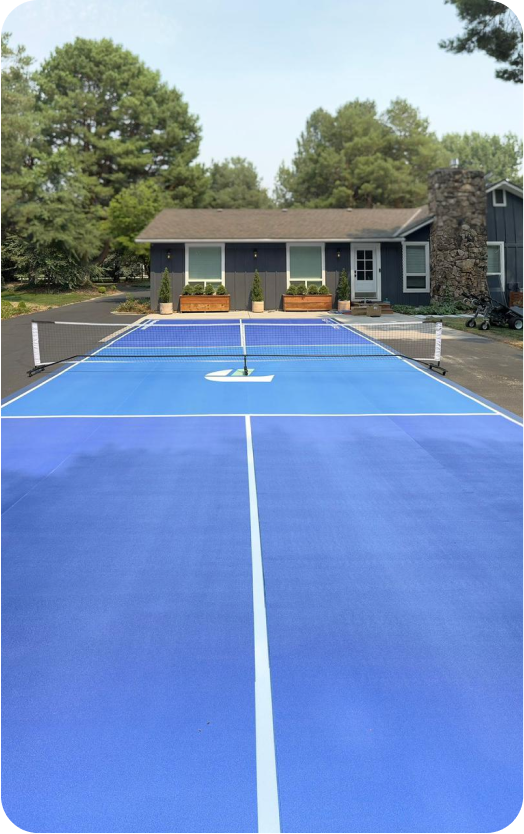
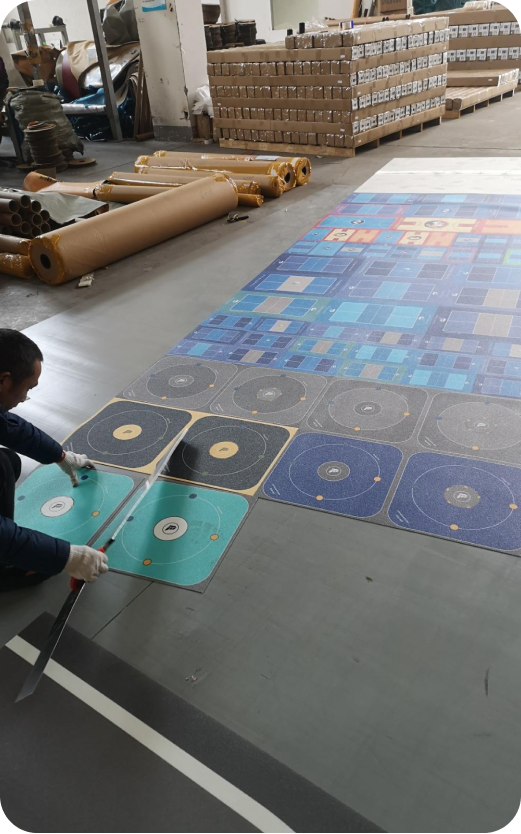
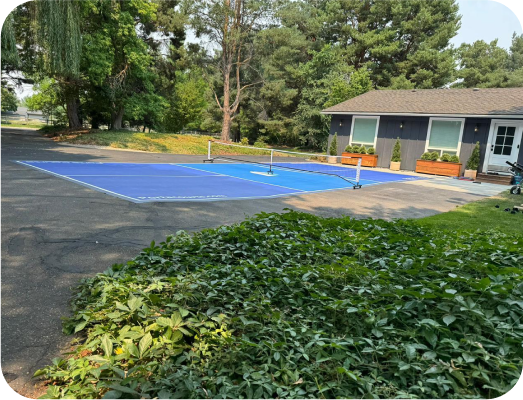
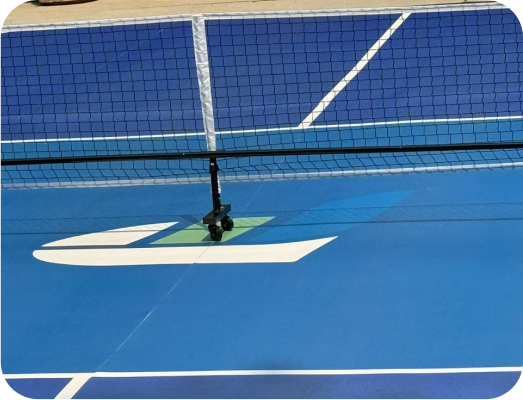
Welcome to PortaCourts, where innovation and excellence converge to deliver premium sports flooring solutions. Our courts feature a professionally engineered surface grain that guarantees anti-skid safety, enabling unrestricted and dynamic movement. Specifically designed for pickleball, our flooring adheres to industry friction coefficient standards, ensuring optimal performance and safety.
Our courts are crafted from UV-resistant acrylic materials with superior traction control, ensuring players have the perfect grip, even in extreme weather conditions ranging from -40°C to 80°C. With advanced shock absorption technology and a rebound rate of over 90%, our pickleball courts offer smooth gameplay and consistent ball response.
For spikeball enthusiasts, we offer premium courts made from a lightweight yet durable mix of raw NBR rubber and PVC, featuring foldable, tool-free assembly. Our Spikeball Courts also come with an adjustable net tensioning system to maintain consistent bounds in each rally. Thus, achieving a net rebound rate of over 90% for quick-paced rallies and fastball returns.
With a minimum average service life of 3-5 years, and a replacement option of portable assembly rolls for both Pickleball as well as Spike ball there are absolutely no worries of wear and tear even after the long hours of gameplay.
Wanna know more about the industry trends, advanced court solutions, and technical know-how behind the designing and manufacturing of professional courts? Chip into our blog section!




At PortaCourts, our journey began with a passion for creating exceptional sports experiences. As avid sports enthusiasts, we recognized the importance of high-quality, durable courts that enhance performance while ensuring safety and longevity. Driven by this vision, we set out to revolutionize the sports flooring industry with innovative designs and state-of-the-art technology.
With a focus on sustainability and cost-effectiveness, our engineering team developed a super stable structure capable of withstanding extreme temperatures, making our floors suitable for all environments. Our advanced manufacturing processes ensure precision and perfection in every court we produce, from minimal splicing errors to flawless parquet alignments.
Over the years, PortaCourts has grown from a small team of innovators to a leading provider of premium sports flooring solutions. We remain committed to our core values of quality, safety, and customer satisfaction, continuously striving to deliver the best in sports court technology.
Join us on our journey as we continue to push the boundaries of what’s possible in sports flooring, helping athletes and enthusiasts unlock their full potential with every game.



Free shipping within the continental US.

7 - 10 Days

35 - 45 Days

100% Secure Payment
Don’t miss out on the latest news, innovations, and exclusive offers from PortaCourts. Stay tuned for updates and be the first to know about our new products and exciting developments!
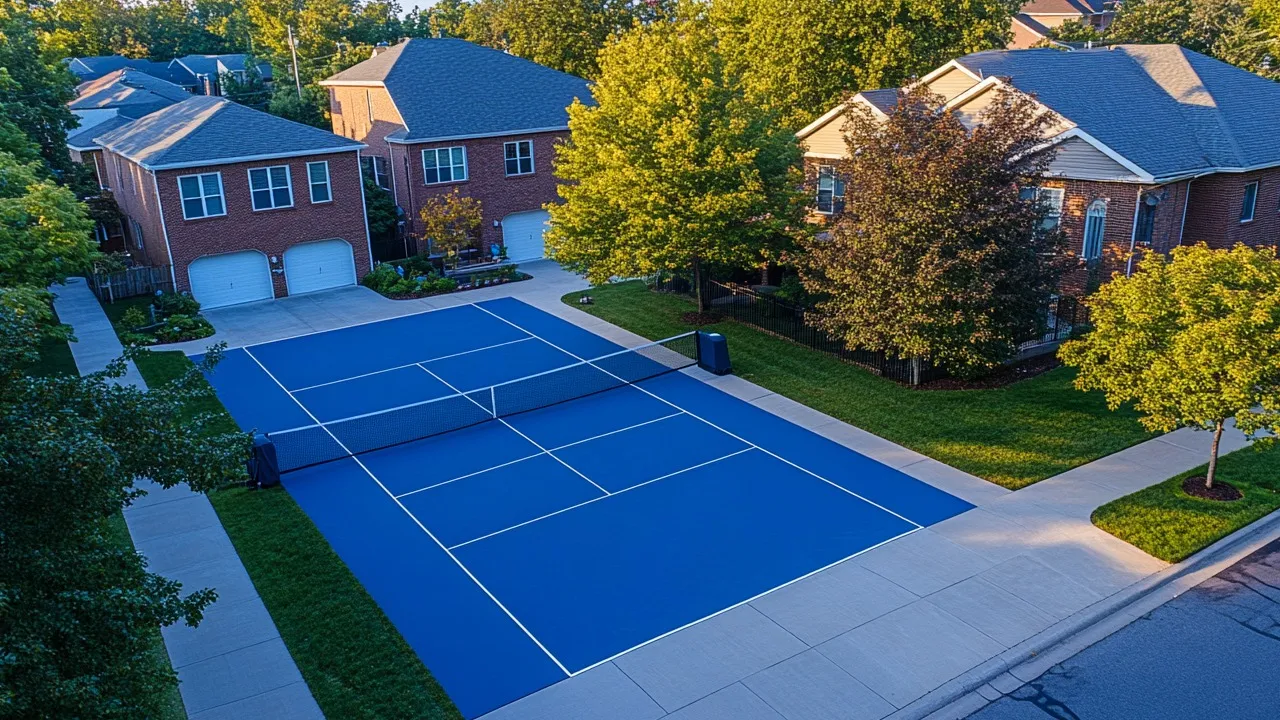

Transforming your driveway into a portable pickleball court for driveway games is easier than you might think. Whether you’re hosting weekend matches with friends, practicing your dink shots solo, or laying the foundation for a neighborhood pickleball league, a temporary pickleball court setup turns ordinary concrete into an action-packed arena. In this guide, we’ll read no surface-level advice here into each step, tool, and technique you need to build a reliable, safe, and hack-proof portable court.
You’ve got a flat, hard surface you drive on every day. Why not drive up your pickleball game there? Using your driveway means:
Installing a permanent court can run into thousands. A portable version:
A regulation pickleball court footprint is 20 ft (width) × 44 ft (length). On a driveway:
Industry term: Snap-together polypropylene court tiles.
Pros:
Cons:
Key specs:
For a temporary pickleball court setup, avoid paint. Use:
Pro tip: Clean the surface with isopropyl alcohol before taping for maximum adhesion.
Opt for telescopic powder-coated steel posts with rubber base anchors. Look for:
Turning your driveway into a portable pickleball court is an investment in accessibility, fun, and fitness. By following this in-depth guide measuring precise footprints, choosing high-performance materials, prepping your substrate, and mastering installation and teardown, you’ll have a professional-grade, temporary pickleball court setup in no time.
So roll up those sleeves, gather your gear, and get ready to serve, volley, and spike right in your driveway. Your neighbors might start asking for game times—get ready to become the local pickleball hero!
Yes! With the right materials and a little planning, your driveway can become a regulation-size, temporary pickleball court perfect for casual play or competitive practice.
Q2. What size should my driveway be for a pickleball court?
A standard pickleball court measures 20 ft × 44 ft. Ideally, your driveway should accommodate this plus 2–3 ft buffer zones around all sides for safety.
Q3. What kind of surface works best for a driveway court?
Concrete is ideal due to its flatness and high friction. Make sure it’s clean, sealed, and free of cracks for best results.
Q4. Do I need to paint lines on the driveway?
No. Use durable court tape designed for concrete. It’s easy to apply, removable, and won’t damage your driveway.
Q5. What are modular court tiles and are they necessary?
Modular tiles are interlocking polypropylene panels that create a professional playing surface. They’re optional but recommended for shock absorption and improved traction.
Q6. How do I set up the pickleball net system?
Use a portable net system with telescoping steel posts and a weighted or anchored base. Ensure the net height is 36 inches at sidelines and 34 inches at center.
Q7. How long does it take to assemble and disassemble the court?
With practice, setup and teardown can take under an hour. Tiles snap together quickly, and tape lines are easy to lay down and remove.
Q8. Can I play in the evening or at night?
Yes, use portable LED floodlights or battery string lights to illuminate the court safely for nighttime games.
Q9. Is the setup weather-resistant?
Modular tiles and portable nets are generally weather-resistant. However, avoid playing on wet surfaces and store materials indoors during extreme weather to prevent damage.
Q10. How should I store everything after use?
Disassemble tiles and stack in labeled bundles. Store net, posts, and accessories in a duffel bag or hard case in a climate-controlled area to avoid warping or corrosion.
, Read More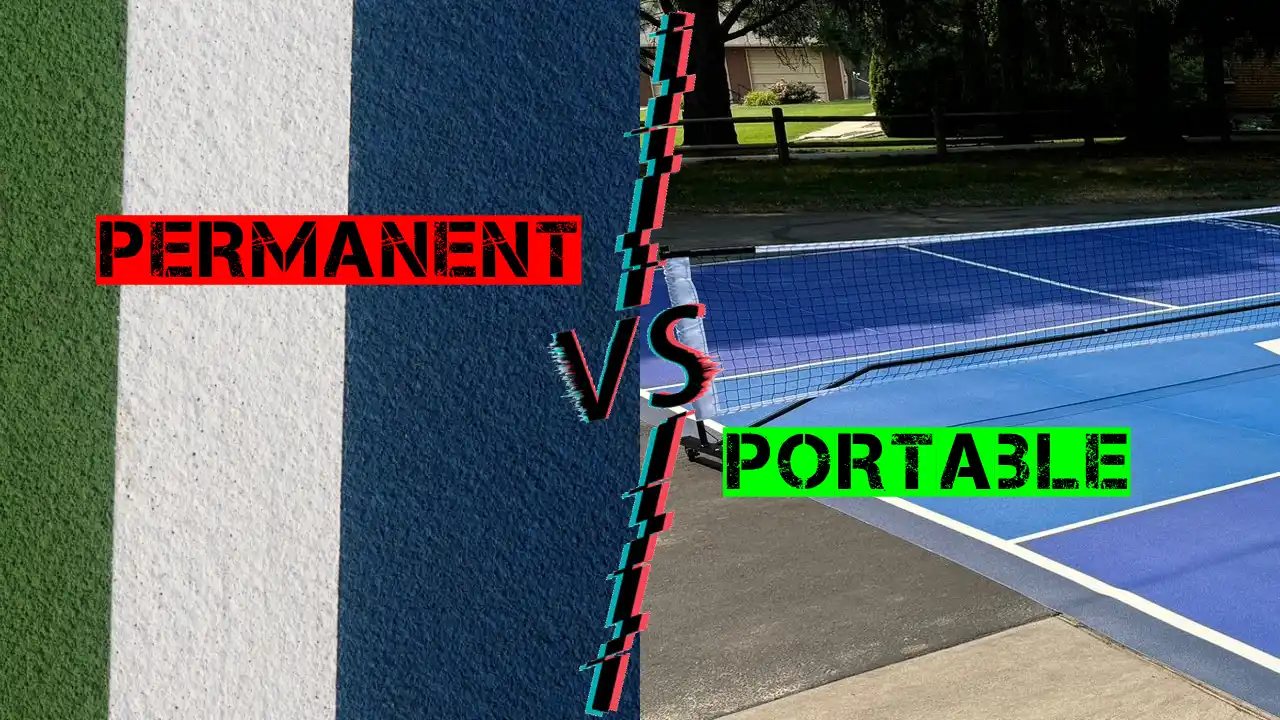

When it comes to bringing pickleball to your home, community center, or recreational facility, one of the first and biggest decisions you’ll face is whether to invest in a portable vs permanent pickleball court. Both options have their unique advantages, drawbacks, and technical considerations. In this in-depth guide, we’ll dive deep into the terminology, installation processes, performance characteristics, and cost implications of both permanent and portable pickleball courts. By the end, you’ll be armed with the industry-specific insights you need to make an informed decision.
Permanent pickleball courts are constructed on-site with a fixed substrate—usually concrete or asphalt followed by specialized surfacing materials. They’re engineered for longevity, high-performance play, and minimal maintenance over time. In contrast, portable or temporary pickleball court setups are modular systems that can be installed, dismantled, and relocated without the need for heavy construction.
| Characterstics | Permanent Court | Portable Court |
| Substrate | Concrete or asphalt pour | Modular tiles, roll-out flooring |
| Installation Time | Weeks to Months | Hours |
| Longevity | 15-20 years with time-to-time maintenance | 3-10 years, depending on maintenance |
| Portability | Fixed in place | Fully Portable |
| Surface Performance | Customized Cushion | Less customizable once manufactured, however, customizable options are available before manufacturing. |
Substrate: The base layer, typically a concrete slab or asphalt surface, which supports the court system.
Acrylic Coating: A UV-resistant polymer finish applied to permanent courts that provides color, traction, and weather protection.
Modular Interlocking Tiles: Engineered plastic or composite tiles that snap together to form portable court surfaces.
Shockpad: A cushioning layer used under permanent court coatings to reduce joint stress.
Coefficient of Restitution (COR): A measure of ball bounce, critical for consistent play.
Slip Resistance (R-value): A metric indicating surface friction, important for player safety.
Building a permanent court is a multi-stage project that requires experienced contractors, site evaluation, and precise engineering.
Site Evaluation and Grading
Substrate Installation
Acrylic Surfacing System
Performance Testing
Portable pickleball courts leverage innovative materials to mimic the performance of a permanent court without the construction timeline.
Surface Materials
Installation Workflow
Additional Read | How to Set Up a Portable Pickleball Court in 20 Minutes
Performance Characteristics
Community Centers & Parks
Schools and Colleges
Tournament and Event Operators
Permanent Courts
Portable Courts
Check out the 10 Best Portable Pickleball Courts for Your Backyard in 2025.
Deciding between a portable vs permanent pickleball court involves balancing performance, cost, and flexibility. Permanent courts deliver unmatched durability, customized performance characteristics, and property value enhancement. Portable courts offer rapid deployment, multi-use flexibility, and lower capital investment.
By carefully assessing your budget, usage patterns, site characteristics, and long-term goals, you can select the court solution that aligns with your vision—whether that’s a dedicated, championship-grade facility or a versatile, pop-up play space. No matter which path you choose, partnering with an experienced court designer and installer like PortaCourts ensures that your pickleball surface meets the rigorous standards of the sport and provides years of enjoyable play.
1. What is the difference between a portable and permanent pickleball court?
A permanent pickleball court is built on a fixed surface like concrete or asphalt and is designed for long-term use with custom surfacing. A portable pickleball court uses modular or roll-out materials and can be set up or dismantled easily, offering flexibility and mobility.
2. Which is better: a portable or permanent pickleball court?
It depends on your needs. Permanent courts offer durability, better surface performance, and enhance property value. Portable courts are ideal for temporary setups, shared spaces, or budget-conscious buyers looking for quick installation and flexibility.
3. How long does a temporary pickleball court setup take?
A temporary pickleball court setup can be completed in just a few hours. Modular tiles or roll-out mats are designed for quick installation—roughly 200 sq ft per hour for a two-person team.
4. Can I set up a temporary pickleball court on any surface?
Yes. Temporary courts can be installed on flat surfaces like concrete, asphalt, gym floors, or even compacted gravel. Proper site preparation ensures safe play and tile longevity.
5. What is the average lifespan of a portable vs permanent pickleball court?
A permanent court lasts 15–20 years with maintenance, while portable courts typically last 3–10 years, depending on usage and storage conditions.
6. Are portable pickleball courts good for tournaments and events?
Absolutely. Portable courts are ideal for tournaments due to their quick setup, consistency across venues, and ability to adapt to various locations—indoor or outdoor.
7. Do portable pickleball courts provide the same performance as permanent ones?
High-quality portable courts with modular tiles or shockpads can offer excellent bounce and traction, though permanent courts have the edge in customized surface cushioning and performance tuning.
8. What are the cost differences between portable and permanent pickleball courts?
Portable courts are more affordable upfront and don’t require heavy construction. Permanent courts involve higher initial investment but offer long-term savings through lower maintenance and greater durability.
, Read More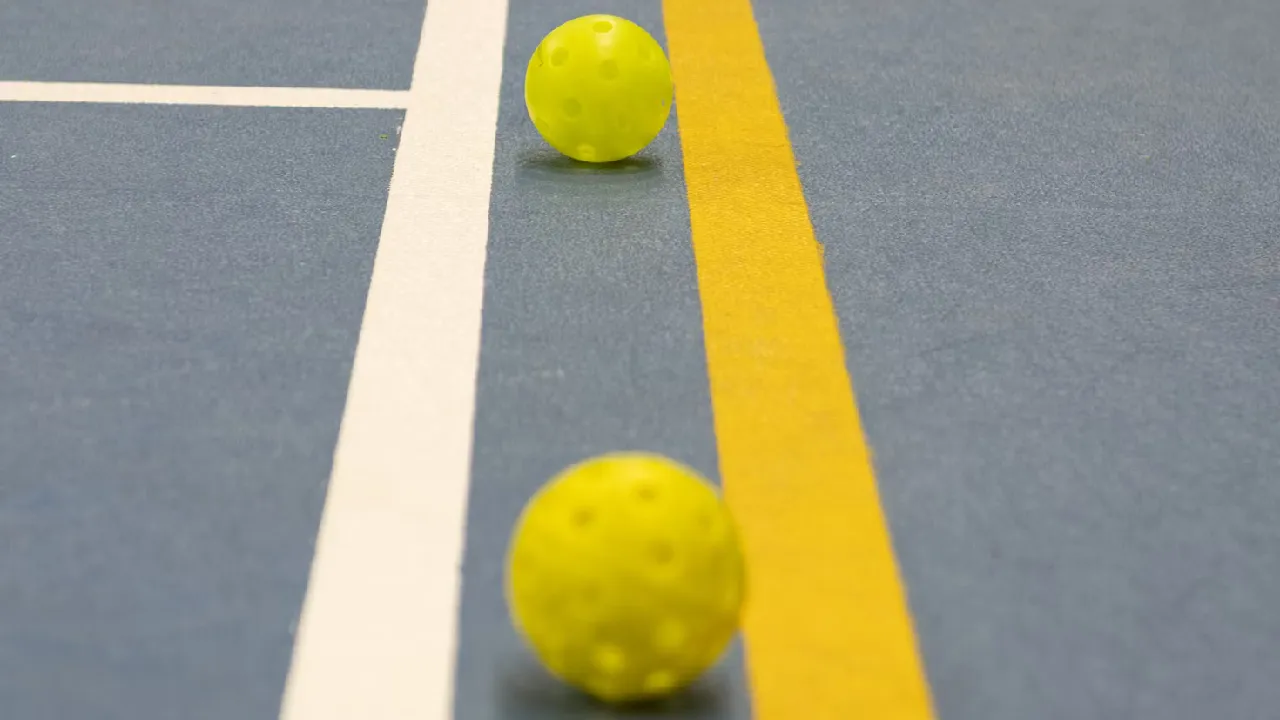

A portable pickleball court is essentially a temporary setup that mimics a regulation court (20 feet wide by 44 feet long) without requiring a permanent surface or in-ground net posts. Instead, you use:
These courts are ideal for:
Step 1: Choose the Right Location (2-3 minutes)
First, scout a flat and clean playing surface. Ideal locations include:
Pro Tip: Make sure you have enough clearance around the court—at least 5 feet beyond each baseline and 3 feet on the sides.
Step 2: Measure and Mark the Court Area (5-6 minutes)
You can use:
Pickleball Court Dimensions:
Marking Tips:
Want to save even more time? Use pickleball boundary lines portable kits that are pre-cut to regulation specs and include corner guides.
Step 3: Assemble the Portable Pickleball Net (5-7 minutes)
Not all portable nets are created equal. Look for features such as:
Popular Options:
For more recommendations, check out 10 Best Portable Pickleball Courts for Your Backyard in 2025!
Assembly Instructions (General):
Most systems can be fully assembled in under 7 minutes with practice.
A full portable pickleball court kit typically includes:
Why They’re Worth It:
Some brands to consider:
Surface-Specific Setup Tips
On Concrete or Asphalt
On Gym Floors
On Grass or Turf
Always wipe down the net poles after outdoor use to prevent rust.
Store everything in a dry bag or plastic container.
Check tape residue or marks after removal to avoid surface damage.
Use a labeled court layout diagram to remember setup orientation.
If you're a coach or a traveling tournament host, you can scale up your setup with:
-Multi-court boundary line systems (for 2 to 4 courts)
-Wheeled carts for transporting nets and kits
-Custom banners or backdrops for branding
-LED court lights for evening play
Also consider investing in a portable scoreboard or app-based scoring system.
Using duct tape: It leaves residue and can damage surfaces.
Forgetting centerline or kitchen line: Essential for legal play.
Buying a cheap net that sags and warps easily.
Skipping measurements and "eyeballing" court lines: Accuracy matters!
Creating a DIY portable pickleball court doesn’t require special tools or hours of setup. With a bit of practice, you can lay down your court, assemble a portable pickleball net, align your pickleball boundary lines portable, and be playing in less than 20 minutes.
For those looking for a ready-to-roll solution, portable pickleball court kits are your best friend. They simplify everything and make spontaneous games with friends, coaching sessions, or tournaments a breeze.
Q: What is a portable pickleball court?
A portable pickleball court is a temporary, regulation-sized (20 × 44 ft) setup that uses a freestanding net system and removable boundary lines—no permanent posts or surface prep required.
Q: Can I use a tennis court to play pickleball?
A: Absolutely! Just tape over the existing lines. Many portable kits even include conversion guides for tennis courts.
Q: How long does a DIY portable pickleball court last?
A: If maintained properly, nets and line markers can last 2-5 years or longer.
Q: Are portable courts allowed in official tournaments?
A: If your net height (36″ posts, 34″ center) and boundary layout meet USAPA specifications, portable courts are approved for official play.
Q: How quickly can I set up a portable pickleball court?
A: With practice, you can choose your location, mark lines, and assemble the net in under 20 minutes, making it perfect for spontaneous games.
Q: Do I need a full court kit or can I mark lines myself?
A: DIY marking with chalk or tape works, but portable court kits (e.g., Pickle-Ball Inc. Court-In-A-Bag) save time, ensure regulation accuracy, and include corner guides.
Q: How do I maintain and store my portable court?
A: After each use, clean net poles, check for tape residue, and store all components (net, lines, carry case) in a dry, labeled container.
Q: Can coaches or clubs use portable courts for multi-court events?
A: Yes—invest in multi-court boundary systems, wheeled equipment carts, and branded backdrops to scale up for clinics, tournaments, or PE classes.